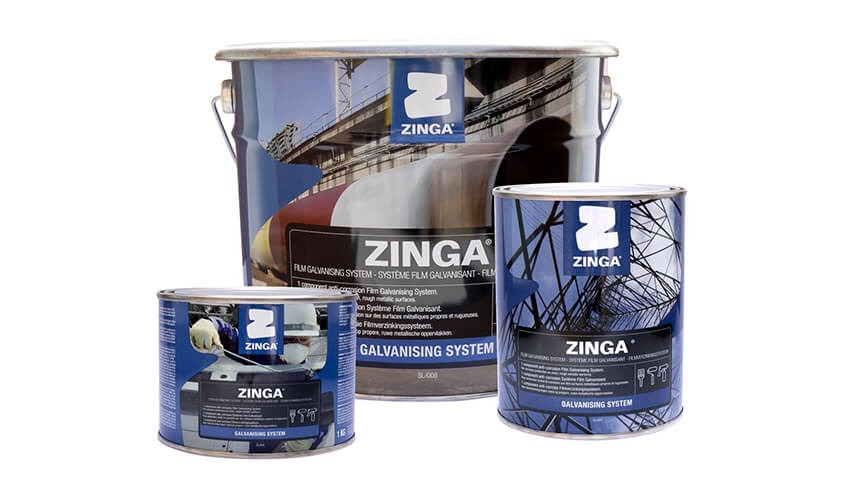The Science Behind Zinga Coatings: Unpacking Cold Galvanising Technology
In the realm of protective metal coatings, Zinga emerges as a transformative solution, redefining the standards of corrosion protection with its cold galvanising technology. Unlike traditional hot-dip galvanising, Zinga coatings offer a unique blend of application ease, cost-effectiveness, and enhanced performance, particularly in highly corrosive environments. This blog explores the science that underpins Zinga’s effectiveness and highlights its practical applications across various industries.
Understanding Cold Galvanising
At its core, cold galvanising is a process that involves the application of a zinc-rich paint to protect steel from corrosion. Zinga coatings utilise this principle but enhance it through a proprietary formulation that includes zinc particles suspended in a binding matrix. When applied to a metal surface, these particles form a sacrificial layer, protecting the underlying metal by galvanic action.
Zinga vs. Traditional Hot-Dip Galvanising
Traditional hot-dip galvanising involves submerging steel into molten zinc, forming a robust coating. However, the process requires high temperatures and substantial infrastructure. In contrast, Zinga coatings can be applied at ambient temperatures using simple spraying or brushing techniques. This distinction not only reduces energy consumption but also allows for on-site applications, making Zinga a versatile option for projects where hot-dip galvanising is logistically challenging.
Key Differences:
- Application Flexibility: Zinga can be applied in the field, whereas hot-dip requires a controlled industrial environment.
- Cost Efficiency: Lower initial setup costs and no need for high energy expenditures make Zinga cost-effective.
- Performance in Corrosive Environments: Zinga maintains its integrity and protective qualities even under severe environmental conditions.
The Benefits of Zinga Coatings
Zinga’s cold galvanising technology offers several compelling advantages:
- Superior Corrosion Resistance: The zinc within the coating acts sacrificially to protect the steel, making it highly resistant to rust and degradation.
- Longevity: Zinga coatings are durable and maintain their integrity over time, reducing the need for frequent reapplications.
- Environmental Impact: With no need for high temperatures, Zinga’s application process has a lower carbon footprint compared to traditional methods.
Case Studies: Zinga in Action
Zinga coatings have been effectively used in numerous sectors, showcasing their adaptability and effectiveness:
- Maritime Industry: In marine environments, Zinga’s ability to withstand saltwater corrosion is invaluable. Structures coated with Zinga exhibit prolonged lifespans, with reduced maintenance costs.
- Infrastructure Projects: Bridges and public utilities treated with Zinga coatings benefit from enhanced durability against environmental elements, ensuring public safety and structural integrity.
- Automotive Applications: In automotive applications, Zinga protects components such as chassis and undercarriages from road salts and moisture, thereby extending vehicle life.
Each case underscores Zinga’s role in driving operational efficiency and sustainability across diverse applications.
FAQs About Zinga Coatings
- How does the Zinga cold galvanising process work? The process involves applying a zinc-rich paint that provides galvanic protection to the metal.
- Can Zinga coatings be applied to previously coated surfaces? You can apply Zinga over existing coatings if you properly prepare the surface.
- What maintenance do Zinga coatings require? While maintenance is minimal, regular inspections are recommended to ensure coating integrity.
Future Prospects and Innovations
Looking ahead, continuous advancements in material science promise to enhance Zinga’s formulations, making them even more effective and environmentally friendly. The development of coatings that can self-heal or indicate wear through colour changes is on the horizon. This potentially setting new standards in the industry.
Conclusion
Zinga coatings represent a significant leap forward in protective technology. They offer robust, cost-effective solutions that meet the demands of modern industry. By embracing Zinga, businesses not only safeguard their assets but also contribute to a more sustainable operational model.

